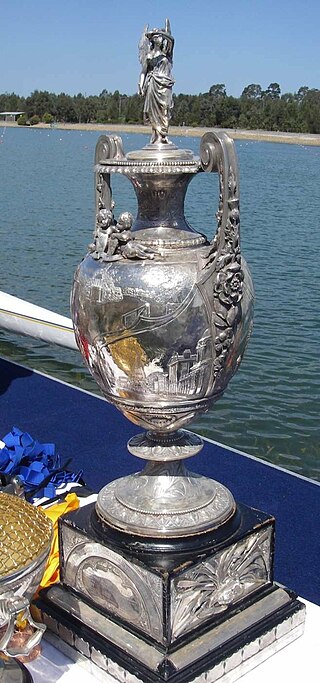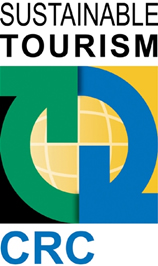Education in Australia encompasses the sectors of early childhood education (preschool) and primary education, followed by secondary education, and finally tertiary education, which includes higher education and vocational education. Regulation and funding of education is primarily the responsibility of the States and territories; however, the Australian Government also plays a funding role.

The Australasian Union of Jewish Students (AUJS) is a federation of Jewish student societies at Australian and New Zealand universities and other higher education institutions. It was founded in 1948 at the University of Sydney and is affiliated with the World Union of Jewish Students. AUJS' constitution lists its four pillars as Judaism, activism, Zionism, and pluralism. AUJS runs social, educational, political and religious events on University campuses.
The College of Advanced Education (CAE) was a class of Australian tertiary education institution that existed from 1967 until the early 1990s. They ranked below universities, but above Colleges of Technical and Further Education (TAFE) which offer trade qualification. CAEs were designed to provide formal post-secondary qualifications of a more vocational nature than those available from universities, chiefly in such areas as teaching, nursing, accountancy, fine art and information technology.
The Australian Research Council (ARC) is the primary non-medical research funding agency of the Australian Government, distributing more than A$800 million in grants each year. The Council was established by the Australian Research Council Act 2001, and provides competitive research funding to academics and researchers at Australian universities. Most health and medical research in Australia is funded by the more specialised National Health and Medical Research Council (NHMRC), which operates under a separate budget.
The National Association of Australian University Colleges Inc (NAAUC) is the peak representative body for students living on Australian tertiary campuses. As a non-profit association, NAAUC aims to coordinate communication between a network of residences on a national scale, foster goodwill amongst association members, and liaise with college heads and administration in order to provide the best possible advice and referral to Australian colleges, residential halls of residences and student villages.
The Apple University Consortium is a partnership between Apple Australia and a number of Australian universities. Every two years it holds the AUC Academic & Developers Conference in an Australian city. It also sponsors subsidised seats to the WWDC conference in San Francisco each year for university staff and students.

The Higher Education Support Act 2003 (Cth) (HESA) is an Act of the Parliament of the Commonwealth of Australia which governs funding for universities in Australia. The Act determines categories of providers eligible for public funding, establishes the basis for providing public funding, codifies the existing aims of universities, and introduces measures to strengthen Australia’s knowledge base.

The Oxford and Cambridge Cup is the trophy awarded to the winner of the Australian University Championship Men's Eight, and is competed for annually at the Australian University Games or the Australian University Rowing Championships. It is the oldest inter-University competition in Australia. The cup is awarded to the winning men's Eight over a standard 2,000m course.
The Australian Liberal Students' Federation (ALSF) is an Australian students' political organisation. Founded in 1948, the ALSF carries similar ideology to the Liberal Party of Australia. The Federation works closely with the Liberal Party, however it is an independent organisation that pursues its own policy agenda.

The Australian and New Zealand Association for the Advancement of Science (ANZAAS) is an organisation that was founded in 1888 as the Australasian Association for the Advancement of Science to promote science.

Lists of Australians covers selected notable Australian people organised by awards and honours, occupation, ethnicity, sports and other qualities.
The Australian Mathematical Sciences Institute (AMSI) was established in 2002 for collaboration in the mathematical sciences to strengthen mathematics and statistics, especially in universities.

Sustainable Tourism Cooperative Research Centre (STCRC),was an Australian Cooperative Research Centre, headquartered in Gold Coast, Queensland, established by the Australian Government's Cooperative Research Centers Program to establish a competitive and dynamic sustainable tourism industry in Australia. It ceased to operate on 30 June 2010.

YHA Ltd, trading as YHA Australia, is a not-for-profit of members trading corporation providing hostel and other accommodation, travel and associated service in Australia. It is a member organisation of Hostelling International.

Baseball at the Australian University Games has been part of the Australian University Games program since the 2004 games. The games are held in the last week of September during mid-Semester break. The reigning champions and most successful team is The University of Sydney who are members of the Sydney Uni Baseball Club.
Kate Beynon is an Australian contemporary artist based in Melbourne. She was the 2016 winner of the Geelong Contemporary Art Prize for the painting, Graveyard scene/the beauty and sadness of bones.
The Australian Laureate Fellowship is an Australian professorial research fellowship awarded by the Australian Research Council. Fellows are chosen each year for five-year awards. In 2023 8 industry-focused Laureate Fellowships were awarded for the first time.

Australian heraldry is the term for the style of armorial achievements, sometimes known as coats of arms, and other heraldic bearings and insignia used in Australia. It largely follows the Gallo-British tradition of heraldry also followed in England, Scotland, Ireland, Canada and New Zealand.














